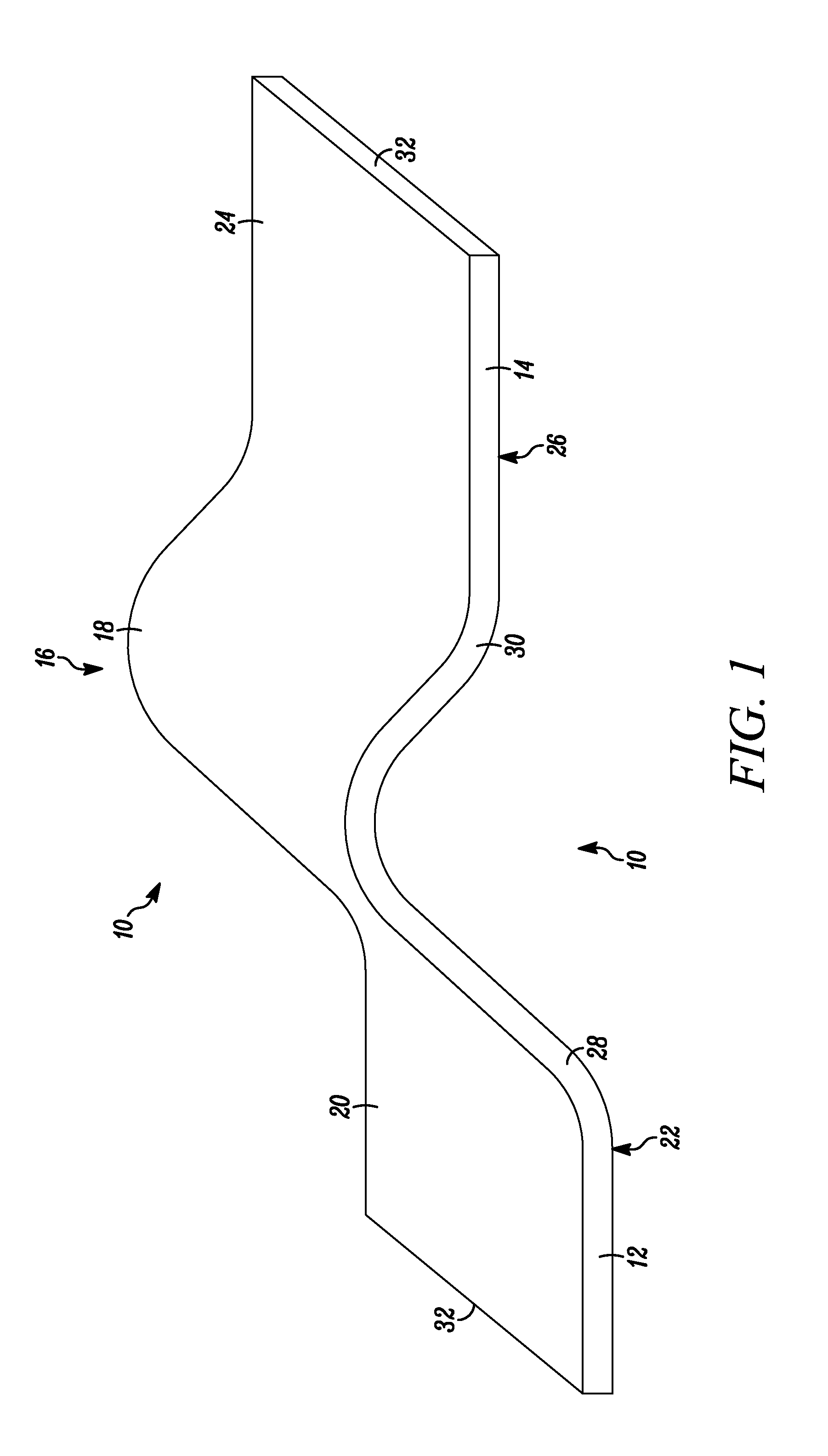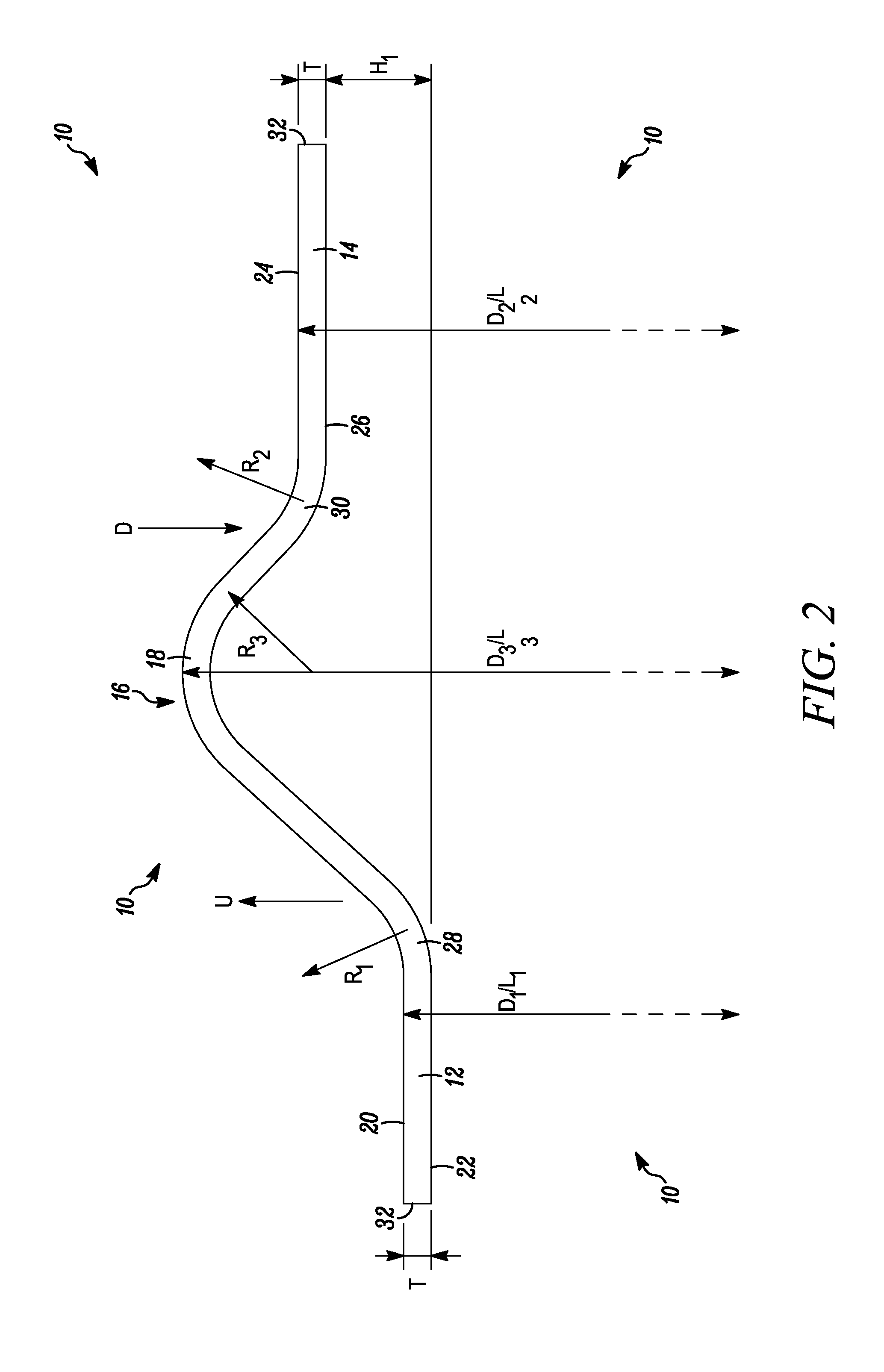Tubular article
a technology of tubular articles and tubes, applied in the field of tubular articles, can solve the problems of reducing the wall thickness of the rib, affecting the structural integrity of the article itself, and jeopardizing the integrity of the tubular article itself, so as to reduce or even suppress the undesirable effects
- Summary
- Abstract
- Description
- Claims
- Application Information
AI Technical Summary
Benefits of technology
Problems solved by technology
Method used
Image
Examples
Embodiment Construction
[0038]Referring now to the drawing in general but particularly to FIGS. 1 and 2, a strip 10 of material, such as metal, has a thickness T and includes a first flat portion 12 at a first inner diameter D1 orlevel L1 and a second flat portion 14 at a second outer diameter D2 or level L2 and a step portion 16 therebetween. The step portion 16 comprises a curved step 18 rising first upwardly in the direction of arrow U and then downwardly in the direction of arrow D and having an outer diameter D3 or level L3 greater than said second outer diameter D2 orlevel L2. This step portion effectively creates the joggle and the rib of the prior art whilst reducing the severity of bending associated with the prior art joggle and thereby reducing the localised stressing of the material. Said first flat portion 12 comprises a top surface 20 and a bottom surface 22, and, in the same manner, said second flat portion 14 also comprises a top surface 24 and a bottom surface 26. The surfaces of the first...
PUM
| Property | Measurement | Unit |
|---|---|---|
| inner diameter D1 | aaaaa | aaaaa |
| outer diameter D2 | aaaaa | aaaaa |
| outer diameter D3 | aaaaa | aaaaa |
Abstract
Description
Claims
Application Information
 Login to View More
Login to View More - R&D
- Intellectual Property
- Life Sciences
- Materials
- Tech Scout
- Unparalleled Data Quality
- Higher Quality Content
- 60% Fewer Hallucinations
Browse by: Latest US Patents, China's latest patents, Technical Efficacy Thesaurus, Application Domain, Technology Topic, Popular Technical Reports.
© 2025 PatSnap. All rights reserved.Legal|Privacy policy|Modern Slavery Act Transparency Statement|Sitemap|About US| Contact US: help@patsnap.com



